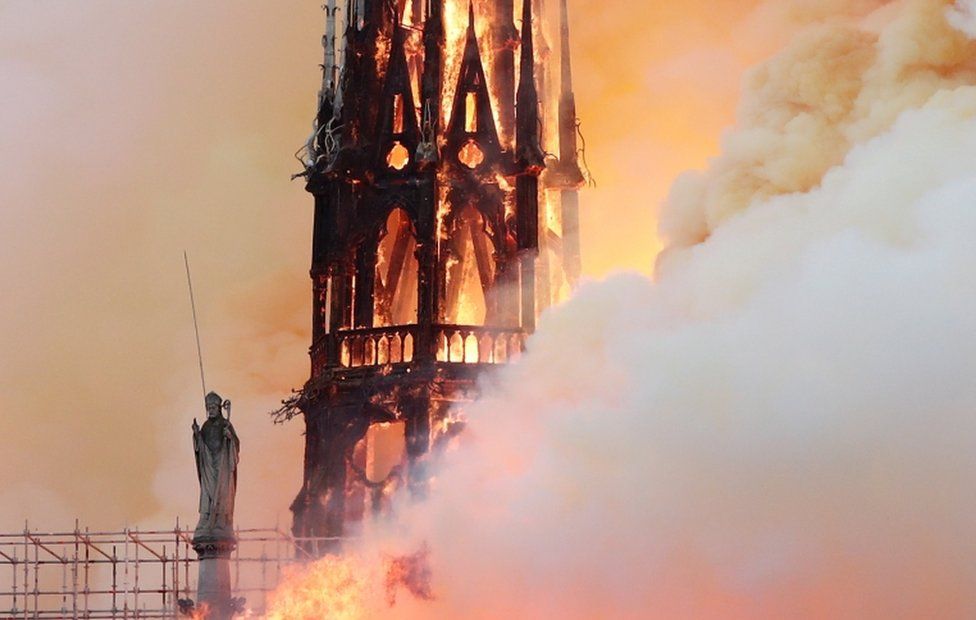The Notre Dame Inferno: How Potential Causes were Addressed
by Robert Harris

As the burning of Notre Dame Cathedral unfolded yesterday evening, many, no doubt, will have speculated upon the causes of the tragedy, given the considerable significance of this landmark structure within European and Christian civilisation.
Local news sources described the fire as accidental soon after news emerged of the blaze, and within a matter of hours there would be confirmation that the authorities would be adopting this line of enquiry:
The Paris prosecutors’ office said investigators are treating the blaze as an accident for now.
They have ruled out arson, including possible terror-related motives.
Prosecutors said Paris police will conduct an investigation into “involuntary destruction caused by fire.”
Ruling out any cause other than accidental fire, at such an early stage, did seem to be an assumption made with unduly rapidity, not least because it occurred within a week of Easter when such a religious landmark would be a prime target within a city and a nation that has suffered more than its share of acts of Islamist terrorism, and especially at a time when numerous French churches have been targeted.
The international media was similarly unanimous in describing the cause of the blaze, with some carrying critical coverage of Youtube’s automated topical descriptors linking the event with 9/11. Even Fox News’ Shepard Smith was rather more than simply unwilling to entertain the speculations of one French interviewee that tried to note some of the above surrounding circumstances.
Prima facie, it might have also been thought that it was peculiar that such a serious fire became so advanced during a time of day when the cathedral would have been in use by public visitors. There have been numerous serious fires during periods of restoration, as the mainstream media rightly noted, but less mentioned was the likely fact that such work would have ceased some hours before smoke became visible.
Although it is notable that this morning has brought news reports that some of the fire-fighters displayed exceptional bravery to overcome the height-access limitations of their equipment, witness testimony indicates that a very slow initial response from the fire services allowed the fire to take hold.
The Daily Telegraph, for example, carried this early report:
Javier Chavez , a visitor, was inside the cathedral when the fire started.
He said: “They took everyone out. We were very very scared and very sad. Thousands of people were crying.”
Mr Chavez added that it took the fire brigade “at least half an hour” to reach the scene.
However, surprise would continue to be expressed about the speed of the fire’s sheer destructiveness. The speed of the advance was described as peculiar by author Ken Follett, on the ITV current affairs programme ‘Good Morning Britain’. Although Follett’s opinion on the behaviour of fires is not definitive, he had previously studied such phenomena and is something of an expert on Notre Dame’s structure, having been recently commissioned by a French TV channel to do a documentary on the Cathedral. The fire seemed to be engulfing the Cathedral’s immense roof in approximately half an hour after smoke first becoming visible. Follett suggested that the huge oak roof beams, which are several feet thick, would have likely taken a long time to catch fire, and would initially have produced smoke for a longer period of time. It is important to note that Follett did not advance any notion of possible cause, but rather that another chain in the sequence of the process – from what would have likely been some modest initial cause of ignition – would have likely occurred.
The prospect of a terrorist act rears but there is perhaps some reason to assume a non-terrorist motive because there doesn’t seem to have been any claims of responsibility. It may be thought that any Islamist organisation linked with the blaze of such a major Christian/Western landmark would be very keen to boast about the deed on social media when the story hit the international news. Alternatively, the inferno could have been caused by a lone-wolf terrorist attack but such individuals commonly swear allegiance to a particular group and/or make some sort of public statement before a given attack.
If religiously motivated terrorism can be deemed to be unlikely at this stage, obvious alternatives still remain, such as an act of criminal arson or non-religious terrorism in which the perpetrators might be less keen to voice their involvement with the crime. For example, the blaze could have been an act of secular quasi-terrorism/arson/vandalism by the left-wing ‘Black-Bloc’, which has been responsible for much of the recent violence within the ‘Yellow Vest’ protest movement. It may therefore be suggested that the French authorities came to an unduly prompt reaction, given the surrounding circumstances.
Ultimately, the near-total destruction of Notre Dame is somewhat less likely to have been caused by any intentional human agency, and it would arguably be irresponsible for news outlets to push the line that it could have had a political or religious motive without some substantive proof. Nonetheless, given (a) the sensitivity of the site, (b) the significant ongoing political (secular) and religious tension in France, and (c) the unusual nature of the fire, it remained and remains a plausible source of query. Just as the mainstream media acted to shut down any mention of alternative causes, it may be thought that the French authorities could have acted in a similar manner to avoid any public disquiet.